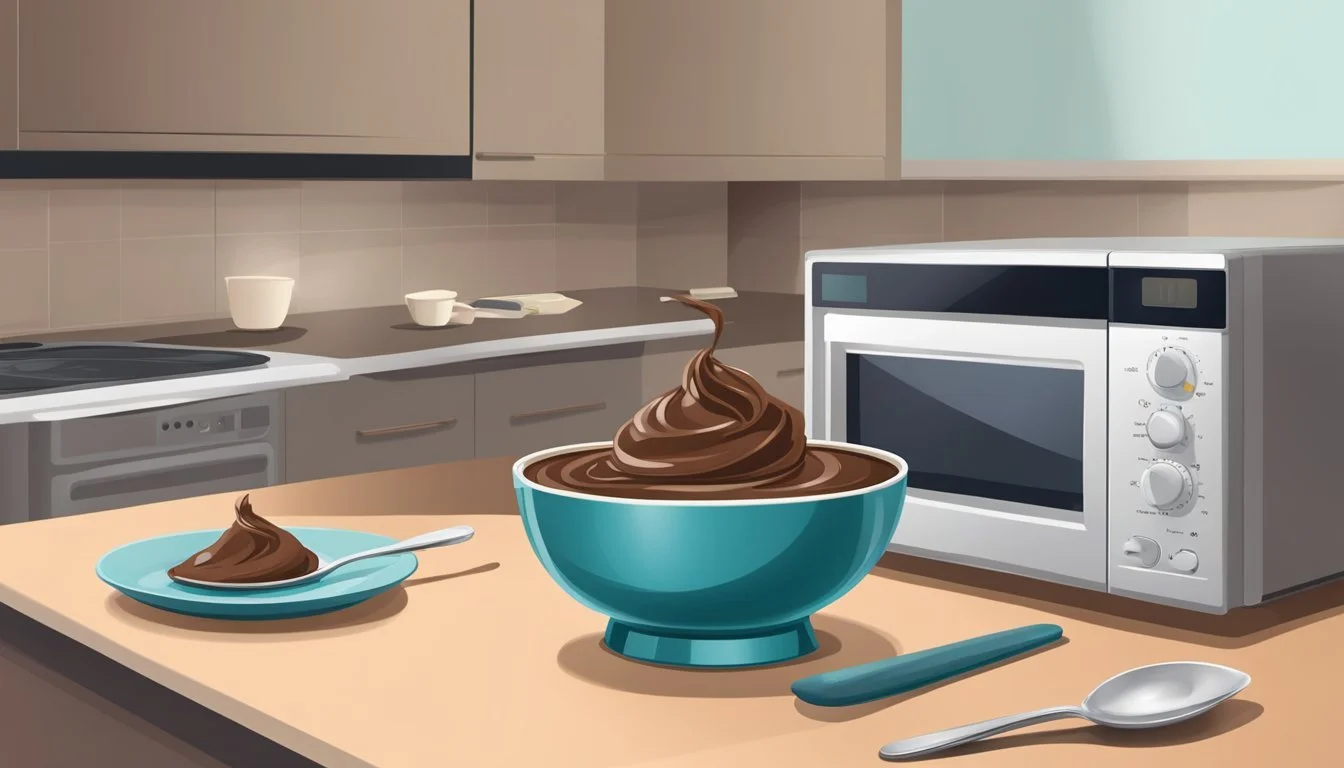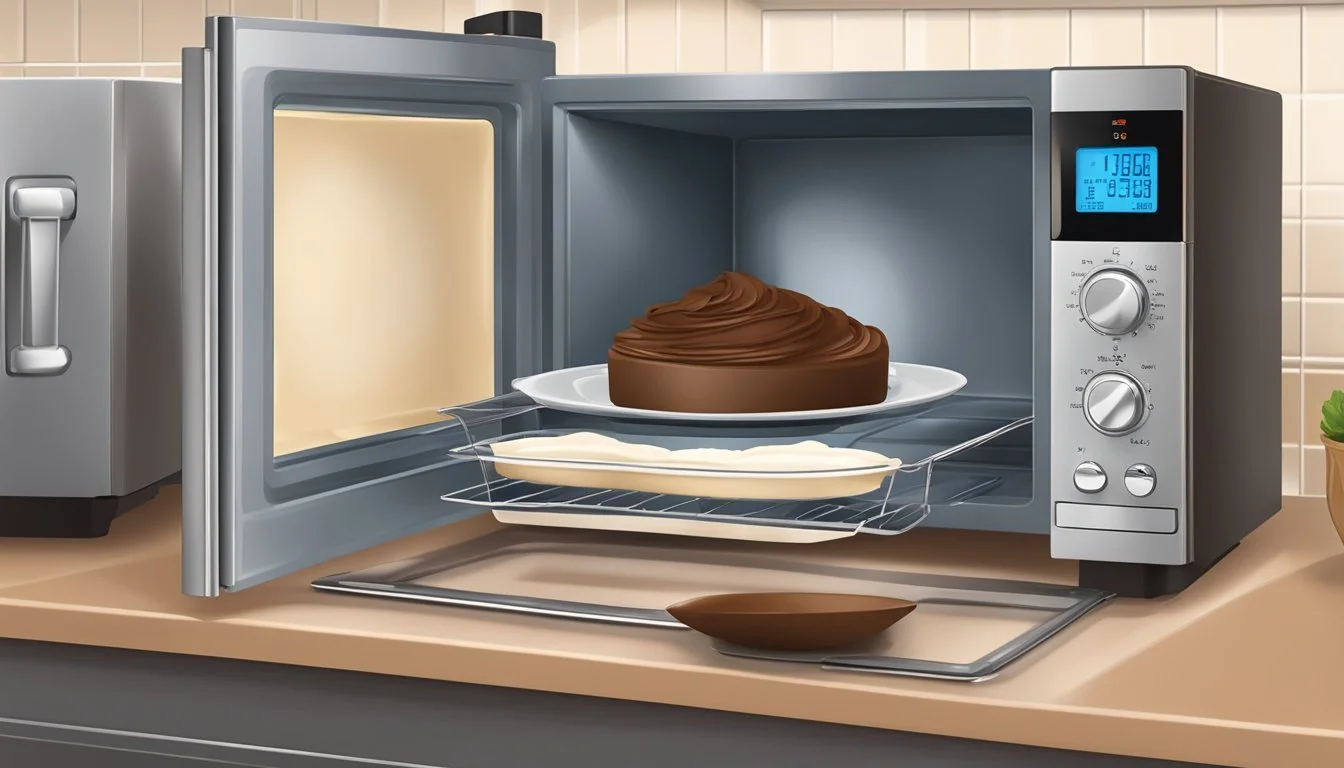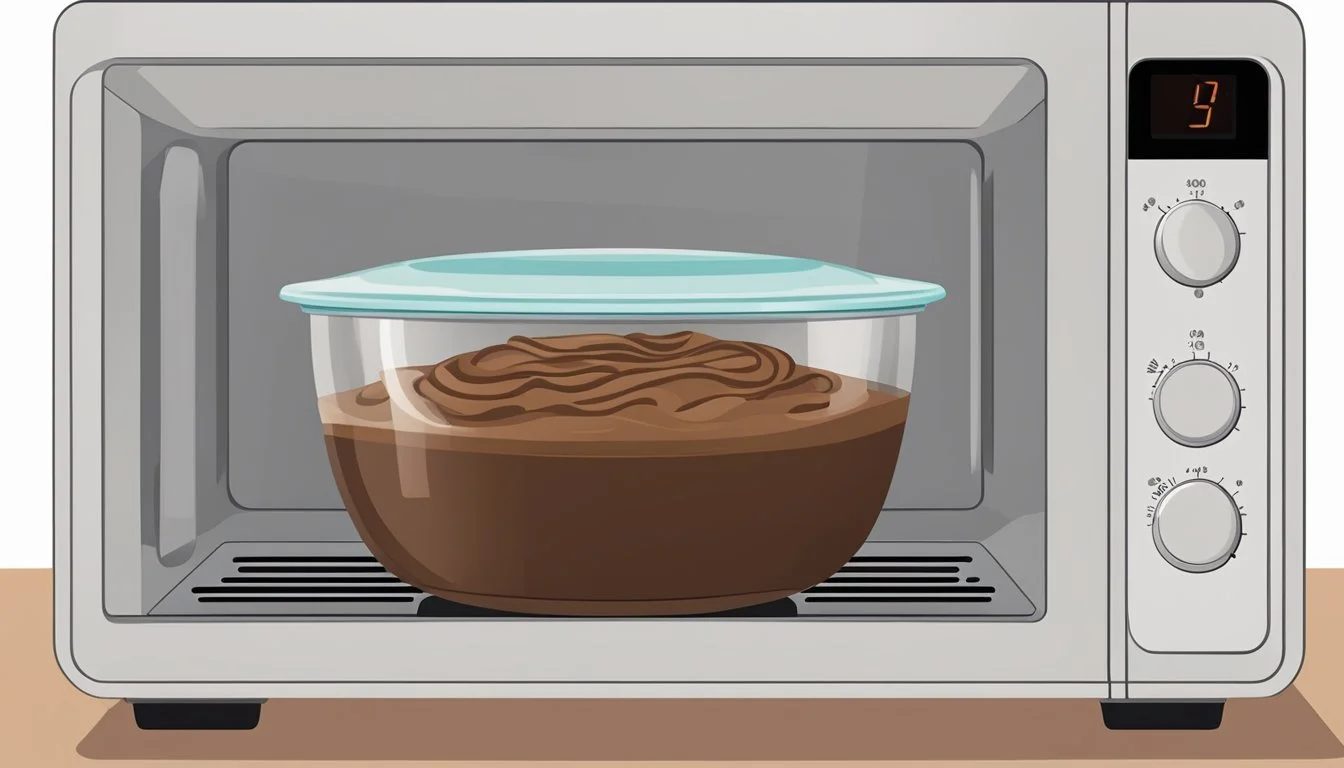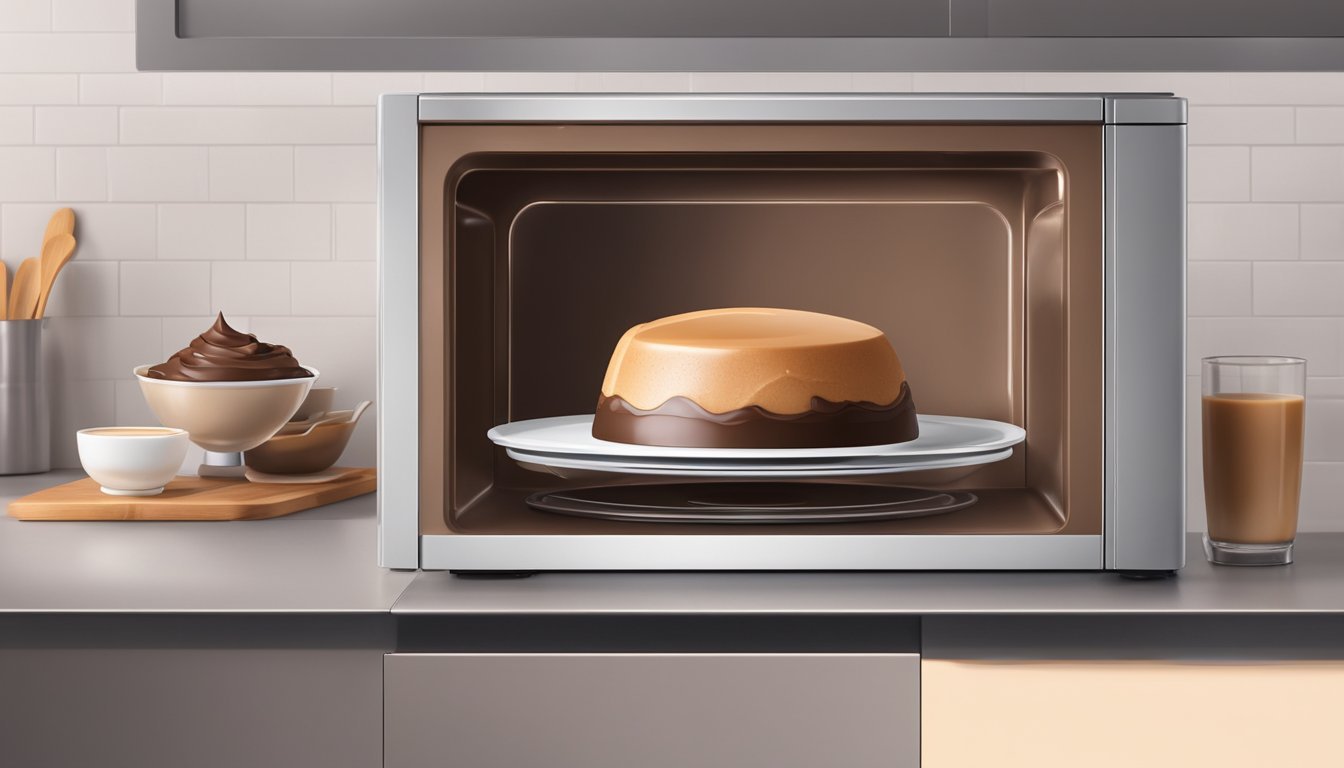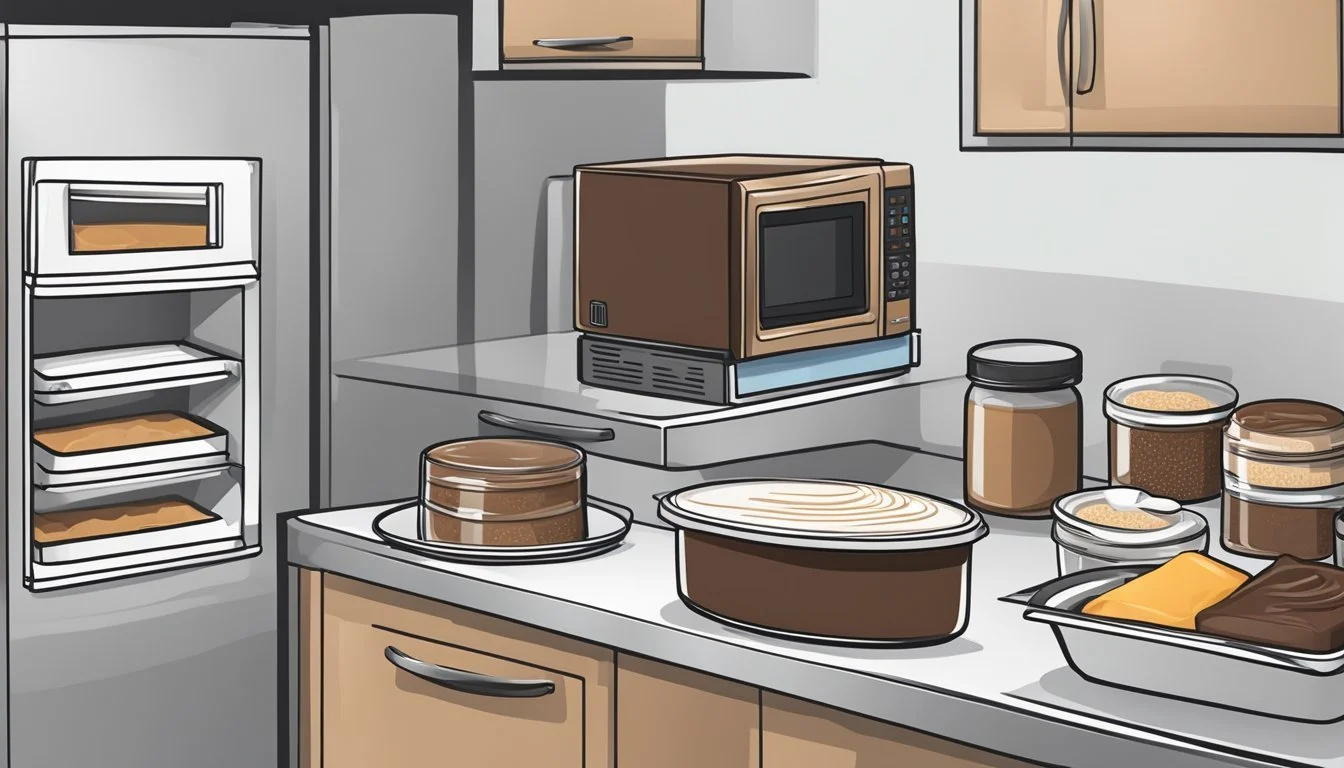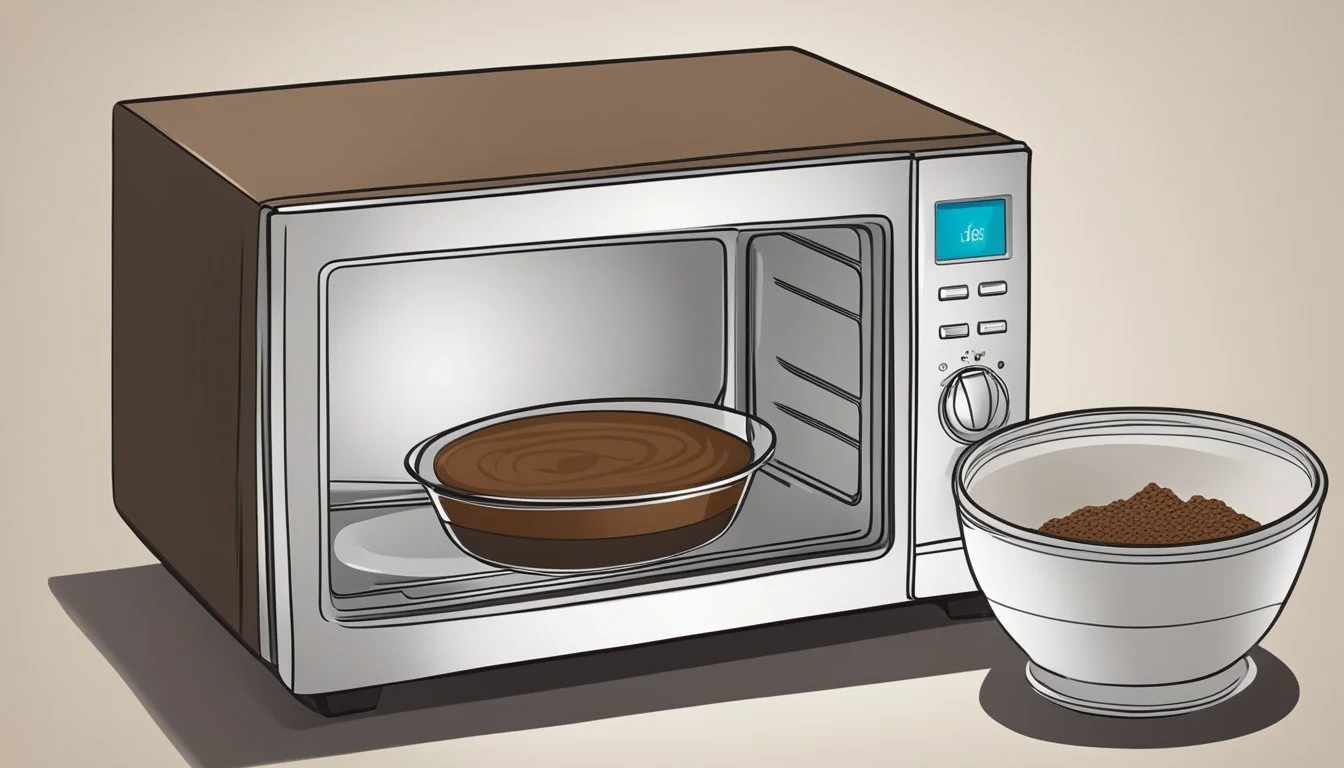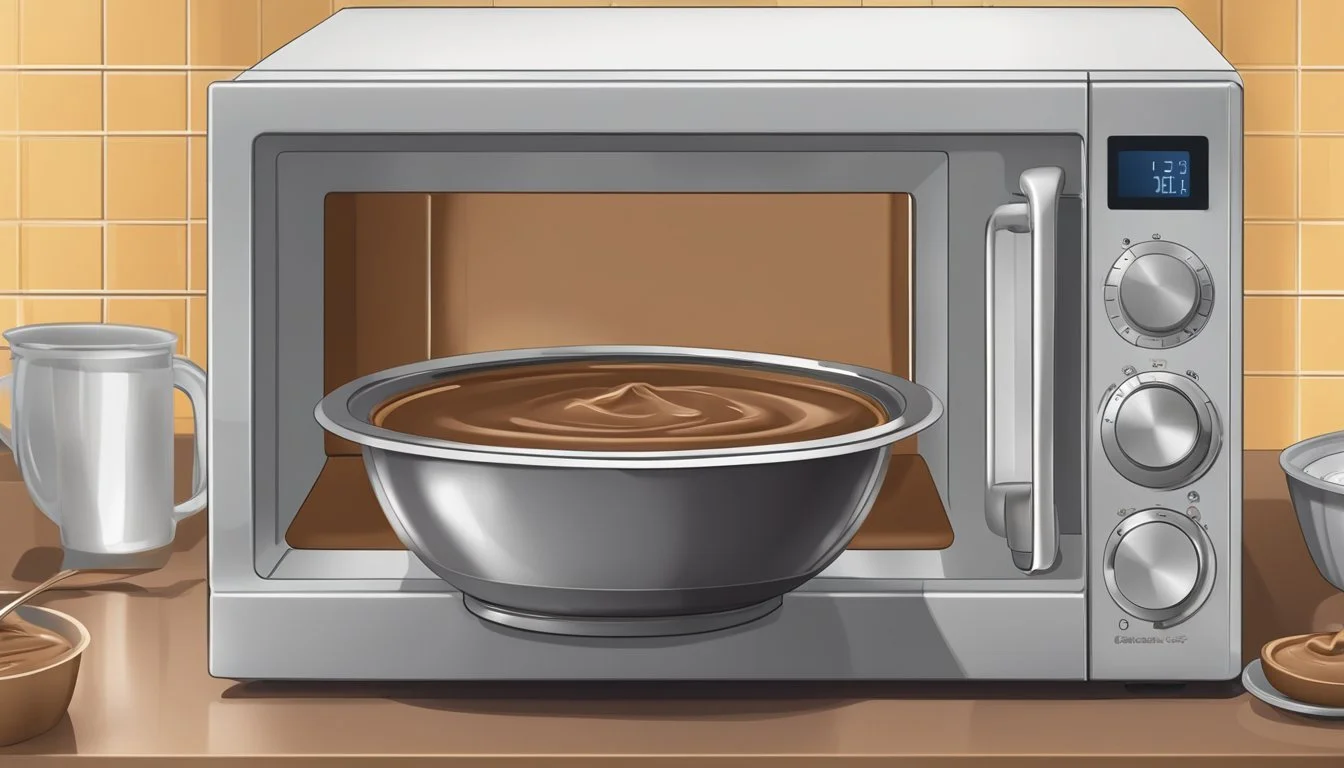Best Way to Reheat Chocolate Mousse
Tips for Maintaining Its Silky Consistency
When it comes to chocolate mousse, the delicate balance of flavor and texture is paramount. This dessert is prized for its light, yet rich consistency that melts in the mouth, a result of its airy and creamy composition. However, reheating chocolate (What wine goes well with chocolate?) mousse can be a challenge, as it requires a gentle approach to preserve the qualities that make it such a beloved treat. Careless reheating can lead to a grainy texture, separation of ingredients, and loss of the smoothness that is the hallmark of a perfectly made mousse.
The key to successfully reheating chocolate mousse lies in maintaining the integrity of its emulsion; this is the fine mixture of chocolate, sugar, and fats from egg yolks and cream. It's crucial to avoid direct heat which can easily degrade the mousse's structure. Instead, methods that promote an even and gentle warming allow the mousse to return closer to its original state without compromising its smooth consistency.
One must navigate the process with precision to ensure the original quality of the mousse remains intact – not just its lush texture, but its deep chocolate flavor as well. Subtle and controlled reheating can revive the mousse from its refrigerated state, allowing it to become the delectable dessert it was at first serve. Techniques and detailed steps for achieving this will ensure that chocolate mousse retains its rightful place as a luxurious and elegant dessert, even after a sojourn in the cold.
Understanding Chocolate Mousse
Chocolate mousse is a delicate dessert that relies heavily on its texture for enjoyment. It is essential to grasp its basic components and how the temperature during preparation and reheating impacts its final quality.
Key Components and Terminology
Chocolate mousse is composed of a few essential ingredients that work together to create its unique texture and flavor. The key components include:
Chocolate: Acts as the base flavor; typically, high-quality chocolate with at least 70% cocoa content is used.
Eggs: Separated into whites and yolks; the whites are beaten to stiff peaks, contributing to the fluffiness, while the yolks add richness.
Sugar: Sweetens the mousse and also helps stabilize the whipped egg whites.
Cream: Heavy cream or whipping cream is used, whipped into stiff peaks to incorporate air and provide a light texture.
To elucidate, below is a table outlining the common terminologies associated with the these components:
Term Description Stiff Peaks Peaks that stand upright when the whisk is lifted, indicating that the cream or egg whites have been sufficiently whipped. Whipping Cream Cream with a fat content of about 30-35%, which allows it to be whipped into stiff peaks. Heavy Cream Similar to whipping cream but with a slightly higher fat content, often used interchangeably in mousse recipes.
The Role of Temperature in Chocolate Mousse
Temperature plays a crucial role at multiple stages:
Melting Chocolate: Chocolate should be melted gently, typically using a bain-marie method to ensure even heating and prevent burning, which is done at about 110-115 degrees Fahrenheit.
Egg Yolk Mixture: If a recipe calls for heating egg yolks, they should be brought to a safe temperature of 160 degrees Fahrenheit to prevent any risk of salmonella.
Combining Ingredients: Ingredients should be combined when the chocolate is not too hot to avoid deflating the whipped cream or cooking the egg whites.
The temperature is equally important when reheating chocolate mousse. It is imperative to do so gently to preserve the mousse's velvety texture and prevent separation.
Preparation Techniques Prior to Reheating
Before reheating chocolate mousse, one must ensure that its texture and consistency are aptly prepared to maintain its characteristic smoothness. Proper technique and attention to detail are pivotal during this stage.
Achieving the Perfect Texture
For chocolate mousse to retain its airy and smooth texture through reheating, it should be cooled down slowly and brought to room temperature. Precision during the initial preparation stage helps in preserving the structure; the quality chocolate must be melted carefully to avoid graininess. It’s crucial to create a uniform and fluffy mousse before the reheating process begins.
Key factors include:
Gentle melting: Chocolate should be melted using a double boiler method, keeping a watchful eye to prevent scorching. Adding a pinch of salt can help enhance the flavors.
Temperature control: Ingredients like butter or vanilla should be added to the melted chocolate mix while it's warm, but not too hot, to maintain the smooth integrity.
Tips for Folding Ingredients
To preserve the mousse's airy quality, one must execute the folding technique with precision. Folding incorporates air and keeps the structure light, a detail crucial for chocolate mousse which relies heavily on its frothy consistency.
Folding should be done with a spatula, using a smooth, bottom-to-top-and-over motion to integrate ingredients without deflating the airy bubbles.
Maintain stiff peaks in the whipped cream or egg whites by folding just until the mixture is combined—overmixing will result in loss of structure.
For a more nuanced flavor, high-quality cocoa or melted chocolate can be folded into the base, ensuring an even distribution without disturbing the fluffy consistency.
Selecting the Appropriate Reheating Method
When reheating chocolate mousse, one aims to maintain its creamy texture without compromising the quality of the chocolate and cream. The method selected must gently bring the mousse to the ideal temperature.
Using a Microwave With Care
Using a microwave is a quick way to reheat chocolate mousse, but it requires attention to detail to avoid overheating. One should:
Heat the mousse in short intervals of 15-20 seconds at 50% power to prevent the cream from separating.
Stir between intervals to ensure even heat distribution and to maintain the mousse's creamy texture.
Alternative Techniques to Microwave Reheating
Apart from the microwave, alternative methods can help preserve the delicate nature of chocolate mousse.
Double Boiler: Place the mousse in a heatproof bowl over gently simmering water, ensuring the water does not touch the bottom of the bowl. Stir consistently until the mousse becomes smooth.
Steam: Utilize steam by covering the mousse with a lid and placing it over a pot of boiling water. The indirect heat will warm the mousse without the risk of seizing.
In both cases, one should monitor the temperature closely, as high-quality chocolate and heavy whipping cream are sensitive to heat. The goal is to achieve a temperature where the mousse becomes pliable but not hot, guarding the integrity of the best chocolate mousse and the brand's distinct quality.
Common Pitfalls and How to Avoid Them
Reheating chocolate mousse requires careful technique to maintain its luscious texture and robust flavor. Missteps can lead to a runny or grainy outcome, undermining the dessert's quality.
Preventing and Fixing Textural Issues
A primary concern with reheating chocolate mousse is the development of an undesirable texture. Textural issues like runniness, graininess, and a curdled appearance can ruin the mousse experience.
Runniness: A mousse that's too runny indicates an imbalance in the ratio of liquid to solid components. To prevent this, chefs should ensure that eggs, chocolate, and whipped cream are properly measured and combined. If runniness occurs during reheating, it might be corrected by gently folding in freshly whipped cream to re-introduce air and structure.
Graininess: This often results from improperly melted chocolate or sugar. Ensuring that the chocolate is melted in a smooth ganache and that the sugar is fully dissolved before combining with other ingredients can fend off graininess. If the mousse has become grainy, a fix may involve passing it through a fine sieve or gently reheating and stirring the mixture until smoother.
Curdling: Usually the result of overmixing or a temperature shock to eggs, curdled mousse is avoidable by tempering eggs and ensuring they are gradually introduced to warmth. Should curdling occur, using an immersion blender can sometimes salvage the texture.
Controlling Flavor and Consistency
The flavor and consistency of chocolate mousse are essential to its appeal, and certain factors must be regulated to uphold these qualities.
Flavor: The intensity and richness of the mousse's flavor hinge on the quality of chocolate used. Opting for high-cocoa-content chocolate can enhance the flavor profile. It's also crucial to maintain the balance of sweetness and bitterness to ensure a rich but not overpowering taste.
Consistency: Achieving the signature smooth consistency of mousse is all about the technique. When folding ingredients, it's critical to do so gently to avoid deflating the aerated structure of the whipped cream. One should not rush this process, as proper folding ensures the final product's velvety consistency.
Ensuring all ingredients, particularly eggs and whipped cream, are at the correct temperature can greatly influence the consistency of the mousse. Ingredients that are too cold can stiffen and those too warm can cause the mousse to become too loose.
Complimentary Additions and Variations
Reheating chocolate mousse does not mean its luxurious experience must be compromised. Thoughtful additions and smart variations can enhance its flavor and accommodate dietary preferences.
Enhancing with Flavorings and Toppings
To elevate the taste and aroma of chocolate mousse, one can incorporate various flavorings and toppings.
Flavorings: Adding a teaspoon of pure vanilla extract or swirling in a tablespoon of coffee can infuse the mousse with deep, complementary flavors. For a richer chocolate taste, mix in a small amount of cocoa butter.
Alcohol: A splash of liqueur, such as Grand Marnier or Bailey’s, can add a sophisticated twist, but it should be used sparingly to maintain the mousse's smooth texture.
Toppings:
Type Examples Whipped Cream Homemade using granulated or powdered sugar Shavings Chocolate shavings for extra texture Dustings A light dusting of cocoa using a fine sieve
Adapting the Mousse for Special Diets
For those with dietary restrictions, chocolate mousse can be tailored to suit special diets without sacrificing its indulgent nature.
Dairy-Free Options: Substitute the cream with coconut cream or a dairy-free whipped topping. Utilizing high-quality chocolate that is dairy-free can also be pivotal in maintaining the desired richness.
Avoiding Raw Eggs: For individuals cautious about consuming raw eggs, consider using a homemade chocolate pudding base, which involves cooked eggs, as a substitute.
Sugar Alternatives: For reduced sugar options, unsalted butter can be used in the base, and natural sweeteners can replace processed sugars.
Serving and Presentation Tips
When one is preparing to serve chocolate mousse, the choice of serving vessels and decorative techniques can make a substantial difference in enhancing the dessert's allure and taste.
Choosing the Right Vessels for Service
For chocolate mousse, ramekins are often the vessel of choice due to their classic appearance and portion control. They are ideally suited for individual servings, ensuring that each guest receives a perfectly sized dessert. One should ensure that the ramekins are chilled before filling them with the mousse to maintain its smooth texture. If one is seeking a more modern presentation, small glass jars or clear dessert cups could provide a contemporary twist allowing the layers of the mousse to be visible.
Decorative Techniques for Visual Appeal
A visually appealing chocolate mousse often incorporates thoughtful finishing touches. One might consider topping the mousse with chocolate shavings made from high-quality chocolate for a simple yet elegant garnish. Alternatively, a dusting of sugar, specifically powdered sugar, can add a fine, snow-like appearance. For a burst of color and freshness, fresh berries not only complement the chocolate's richness but also add a vibrant contrast to the presentation. When decorating, it’s essential to maintain a balance so that the added elements enhance rather than overwhelm the dessert.
Storage and Longevity
When it comes to storing chocolate mousse, the key is to maintain its freshness while preserving its smooth and creamy texture. Chocolate mousse is a delicate dessert that requires proper storage to prolong its shelf life.
Refrigeration is essential for chocolate mousse. This dessert should be stored in an airtight container to prevent the absorption of other food odors and kept at a consistent temperature of 40°F or below. Once refrigerated, homemade chocolate mousse typically lasts 3-5 days, while commercial varieties may extend up to 7-10 days.
Freezing can extend the longevity of chocolate mousse, with a general rule of thumb being up to three months. To freeze, one should tightly wrap the container with plastic wrap followed by aluminum foil before placing it into freezer bags.
Here are some recommended practices for storage:
Chill the mousse as soon as possible after preparation.
Avoid leaving the mousse at room temperature for prolonged periods to prevent bacterial growth.
Monitor for signs of spoilage, such as changes in texture or smell, and discard if any are present.
Storage Method Duration Notes Refrigerator 3-5 days Use an airtight container Freezer Up to 3 months Wrap well and use freezer bags
To ensure the chocolate mousse retains its quality, always seal it properly and return it to the refrigerator promptly after serving. By following these storage guidelines, one can enjoy this delectable dessert while safeguarding against spoilage.
Advanced Techniques and Professional Tips
In the world of high-quality dessert preparation, mastering advanced techniques is crucial for the perfect reheating of chocolate mousse. Expert tips focusing on ingredients and methods can elevate the texture to new heights of velvety smoothness.
Mastering the Use of Gelatin in Mousse
Gelatin is essential for maintaining the structure of chocolate mousse during and after reheating. Here are precise steps to follow:
Dissolve Gelatin Properly: Ideally, gelatin should be sprinkled over cold water and allowed to bloom for about 5 minutes before being gently melted, ensuring no granules remain.
Combine with Mousse: Once melted, the gelatin should be cooled slightly before being incorporated into the mousse. This creates a stable base that withstands gentle reheating.
Incorporating High-End Chocolate Varietals
The quality of the chocolate bar directly impacts the flavor and texture of the mousse. Here's how to incorporate premium chocolate effectively:
Select the Right Chocolate: High-end variants like Callebaut or single-origin chocolates contribute to a more refined taste. Aim for a dark chocolate with at least 70% cocoa for intensity or a milk chocolate for creaminess.
Melt Chocolate with Care: Chocolate should be gently melted, avoiding temperatures above 115°F (46°C) for dark or milk chocolates to preserve the velvety texture. Always stir to ensure even melting.
By following these professional tips, reheating chocolate mousse while preserving its smooth and creamy texture becomes an achievable art form.
Health and Safety Considerations
When reheating chocolate mousse, one must consider both its nutritional value and food safety implications to ensure that the dessert maintains its high quality and is safe to consume.
Temperature Control: The temperature at which chocolate mousse is heated is crucial. It should be warmed gently, ideally in a bain-marie, to avoid overheating which could lead to separation and graininess. Additionally, maintaining a temperature below 160 degrees Fahrenheit prevents the eggs in the chocolate mousse from scrambling.
Eggs and Salmonella: Eggs, a primary ingredient in chocolate mousse, can pose a risk of salmonella infection if not handled properly. It's essential to use pasteurized eggs or to fully cook the eggs during the mousse preparation phase to mitigate this risk. When reheating, ensure that the mousse reaches 74 degrees Celsius (165 degrees Fahrenheit) to further ensure food safety.
Nutritional Considerations: While reheating does not significantly alter the nutritional profile of chocolate mousse, it is important to recognize that it is a high-calorie dessert. Consumption should be moderate, and those with dietary restrictions should take extra caution to avoid any adverse effects on health.
Food Storage: To minimize the risk of foodborne illness, chocolate mousse should be stored in the refrigerator if it will not be consumed immediately after cooling and should be consumed within a few days to preserve freshness and safety. If reheating after storage, ensure it is only reheated once to maintain its texture and prevent bacterial growth.
One must not compromise on the safety of the dessert while reheating chocolate mousse. These considerations ensure both the preservation of the dessert's seductive, smooth texture and its safe consumption.
Expanding Mousse Applications
Chocolate mousse isn't just a standalone dessert; it can be a versatile component in an array of culinary creations. Its smooth and creamy texture can enhance a variety of recipes, providing a rich chocolate flavor and a luxurious mouthfeel.
Innovative Uses in Recipes and Desserts
Chocolate mousse lends itself to innovative applications beyond the traditional dessert cup. Chefs and home bakers alike can incorporate mousse into various chocolate recipes, utilizing its creamy consistency to enrich the overall experience of their creations. Here are some specific ways to include chocolate mousse in desserts (What wine goes well with desserts?):
As a Filling: Mousse can serve as a decadent filling for cupcakes, creating a surprise chocolate center. It can also be piped into hollowed-out fruits like strawberries for an elegant treat.
Creating Layers: When crafting a multi-layered cake, chocolate mousse adds a luscious layer that pairs well with sponge cake, providing contrast and complexity.
Alternative to Frosting: Chocolate mousse offers a lighter, airy alternative to traditional buttercream frosting. It can be used to top cakes and cupcakes, or piped onto cookies for added indulgence.
Pairing with Ice Cream: A dollop of chocolate mousse atop a scoop of ice cream elevates a simple bowl into a sophisticated dessert, adding both flavor and a creamy, velvety texture.
In order to maintain the integrity of mousse when used in recipes, one should pay careful attention to its preparation and storage. Chocolate mousse should be kept chilled and handled gently to preserve its texture and flavor. When reheated, it should be done so cautiously, as excessive heat can cause separation and spoil the delicate structure of the mousse.
By exploring these applications, chocolate mousse becomes a transformative ingredient that can modify the character of classic desserts or become the foundation for new, inventive culinary delights.
Tools of the Trade
When reheating chocolate mousse, the right tools can make the difference between a luscious dessert and a culinary misstep. A hand mixer or stand mixer is essential in the process of reincorporating air and maintaining the mousse's texture when rejuvenating it from its chilled state.
Hand mixers are convenient for quick tasks and smaller batches of mousse. They afford the cook control and flexibility, allowing for gentle mixing to avoid overbeating, which can cause the mousse to lose its light texture.
For larger quantities or a hands-free approach, a stand mixer is the tool of choice. With its multiple speed settings and powerful motor, a stand mixer efficiently whips the chocolate mousse back to its desired consistency while allowing the chef to multitask.
Essential Equipment:
Mixing Tool: Hand mixer (for control) or stand mixer (for efficiency)
Container: Heatproof bowl (for a bain-marie)
Thermometer: Digital or analog (to monitor the temperature)
The process often involves whipping cream which is a delicate step. Whipping cream to soft peaks before folding it into the mousse can reintroduce air and volume that might have been lost. The temperature of the cream is vital – it should be cold to whip effectively.
Folding is an integral technique to master. It combines the whipped cream with the melted chocolate gently so as not to deflate the mixture. The tool of choice here is a spatula, which allows for broad, sweeping strokes that fold the ingredients together with care and preserve the mousse's fluffy texture.
Technique-Specific Tools:
Whipping: Cold whipping cream
Folding: Spatula (for gentle incorporation)
In summary, precise tools and careful handling are pivotal in reheating chocolate mousse to achieve a smooth and airy result.


